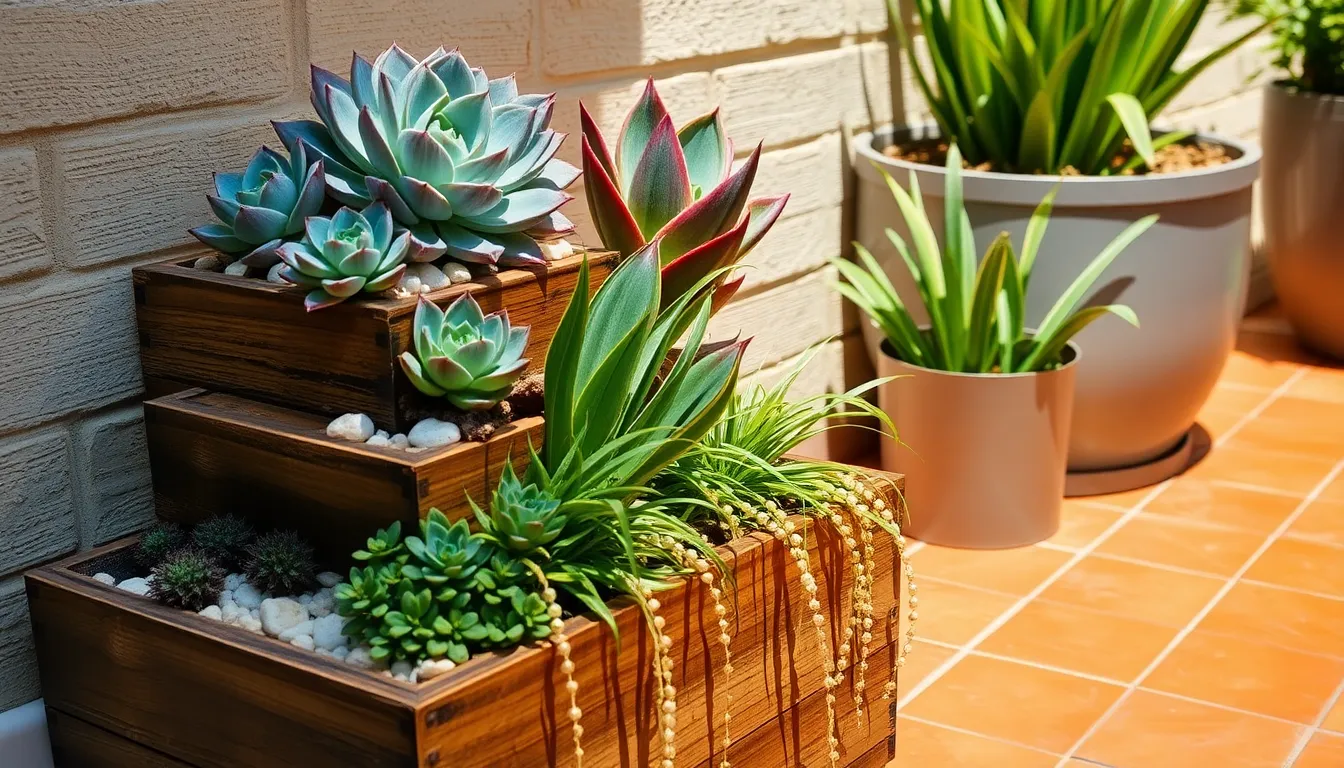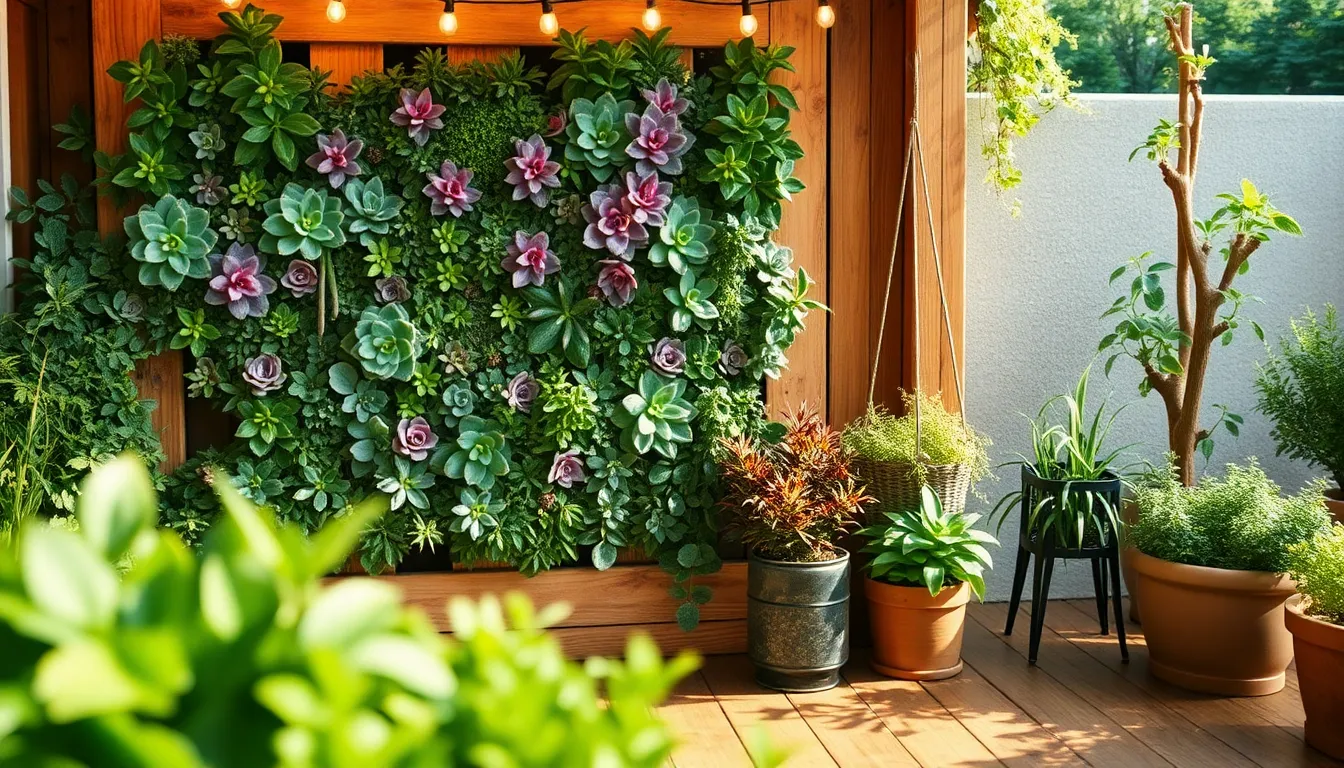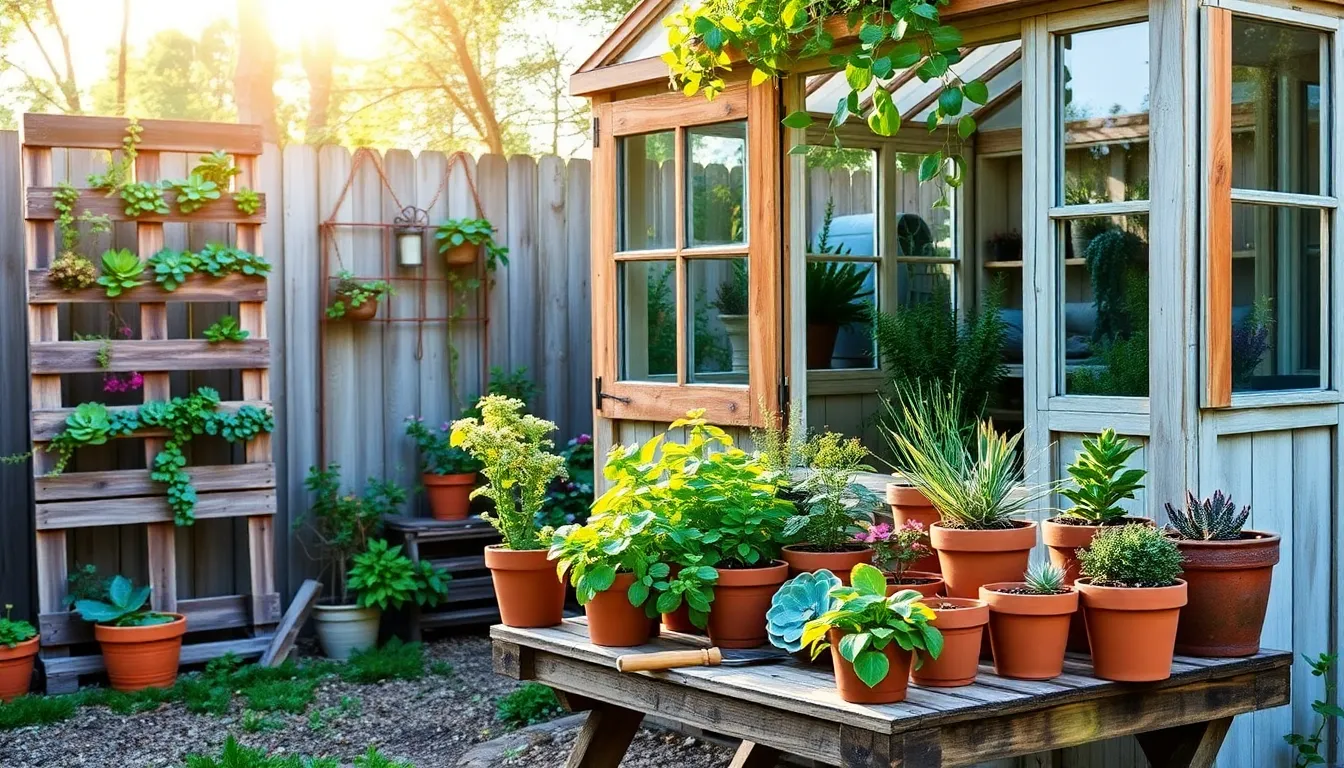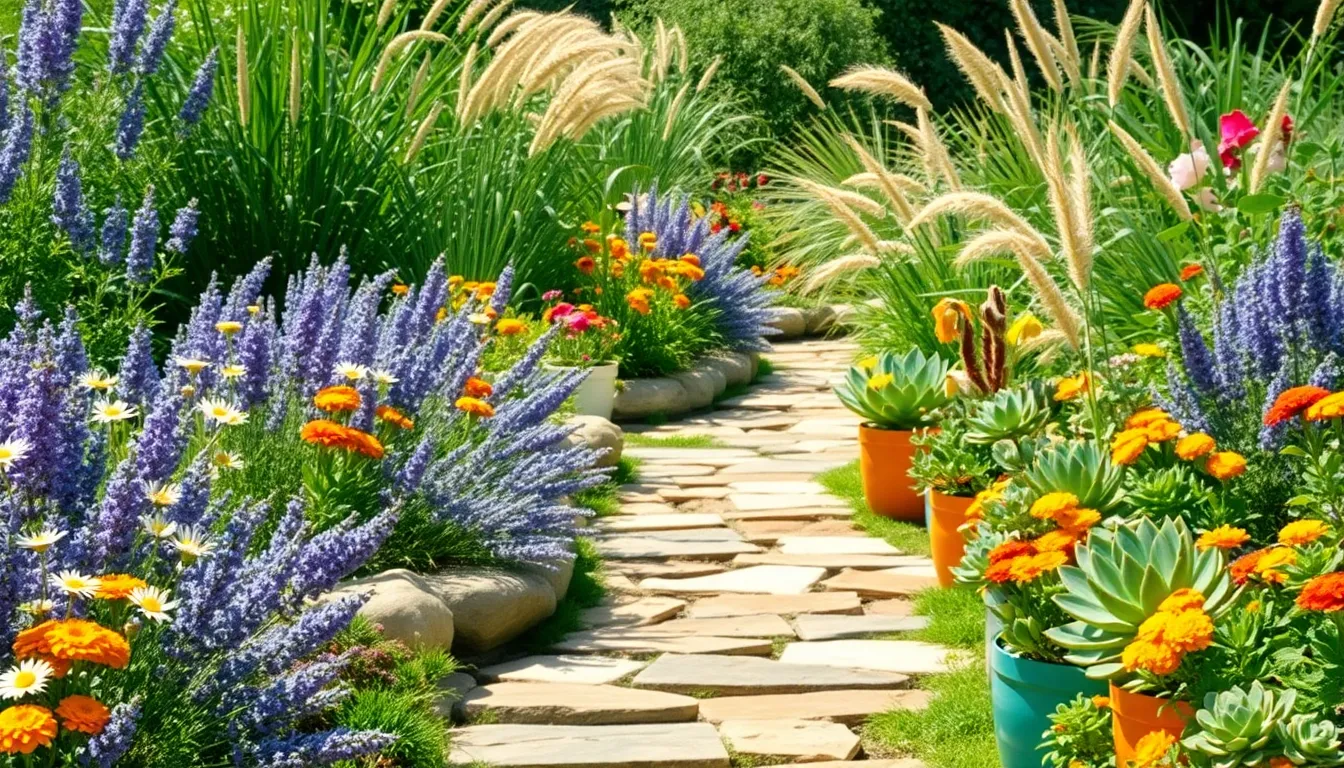Imagine stepping onto your patio and being greeted by a lush, thriving garden that sips water sparingly while dazzling the senses. Whether you’re a budding green thumb or a seasoned gardener seeking new inspiration, “10 Low-Water Patio Garden Ideas” is your passport to cultivating a vibrant oasis that thrives with minimal water. These garden designs are more than just a feast for the eyes; they are a practical solution for those wanting to conserve water without sacrificing beauty.
In a world where water conservation is increasingly important, this guide provides invaluable insights into low-water gardening techniques that are both eco-friendly and stunning. You’ll discover a variety of plants and design ideas that promise to transform your outdoor space into a serene haven, all while easing the strain on your water bill. With each idea tailored to maximize both resourcefulness and aesthetic appeal, you’ll feel empowered and excited to embark on your gardening journey, confident in achieving gorgeous results with ease.
Choose Drought-Tolerant Plants
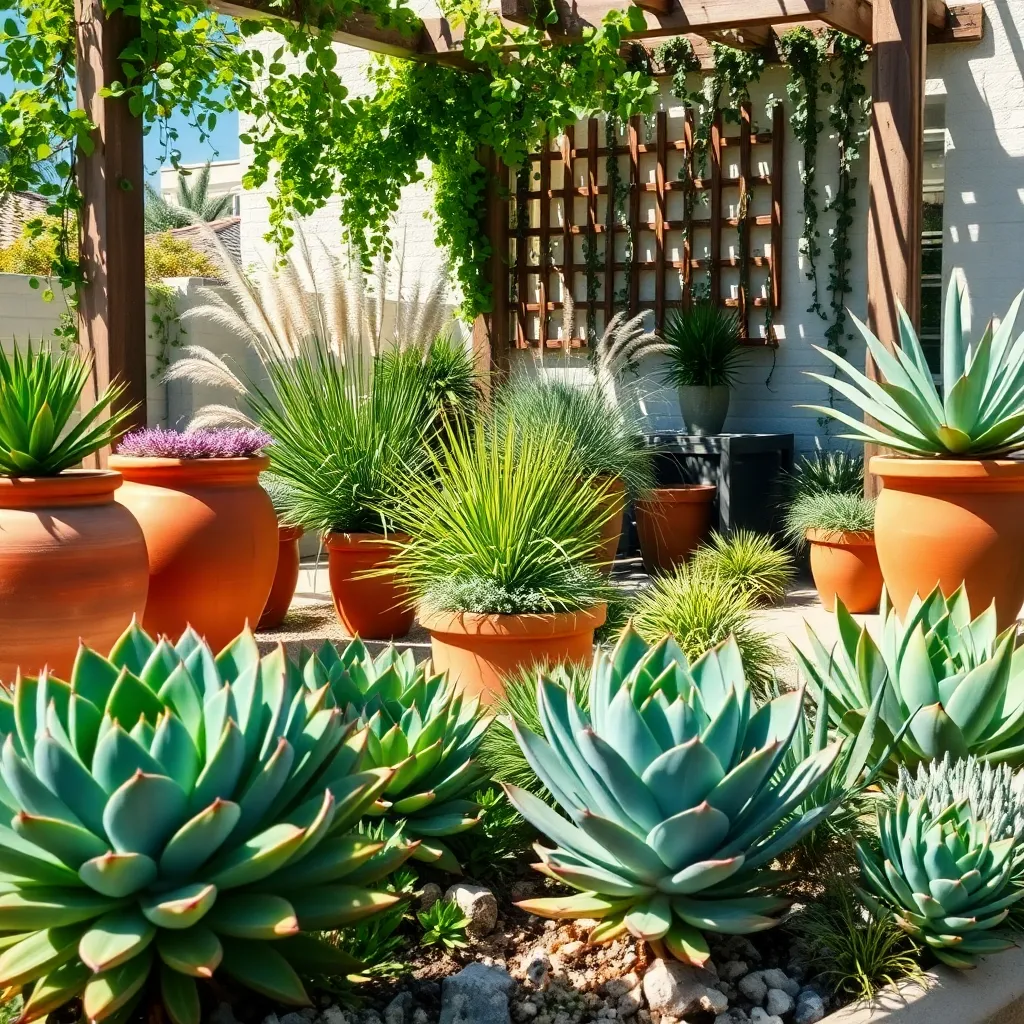
When selecting plants for a low-water patio garden, it’s essential to choose varieties that naturally thrive in dry conditions. Consider hardy perennials like lavender and succulents, which are renowned for their drought resistance and low maintenance needs.
Soil quality plays a crucial role in supporting drought-tolerant plants. Use a well-draining soil mix, such as one containing sand or gravel, to prevent root rot and promote healthy plant growth.
Once established, many drought-tolerant plants require minimal watering. For optimal results, water deeply but infrequently, allowing the soil to dry out completely between watering sessions.
In addition to proper watering, mulching around your plants can significantly reduce moisture loss. Apply a layer of organic mulch, like bark or wood chips, to insulate the soil and keep roots cool and hydrated.
Incorporate Mulch to Retain Moisture
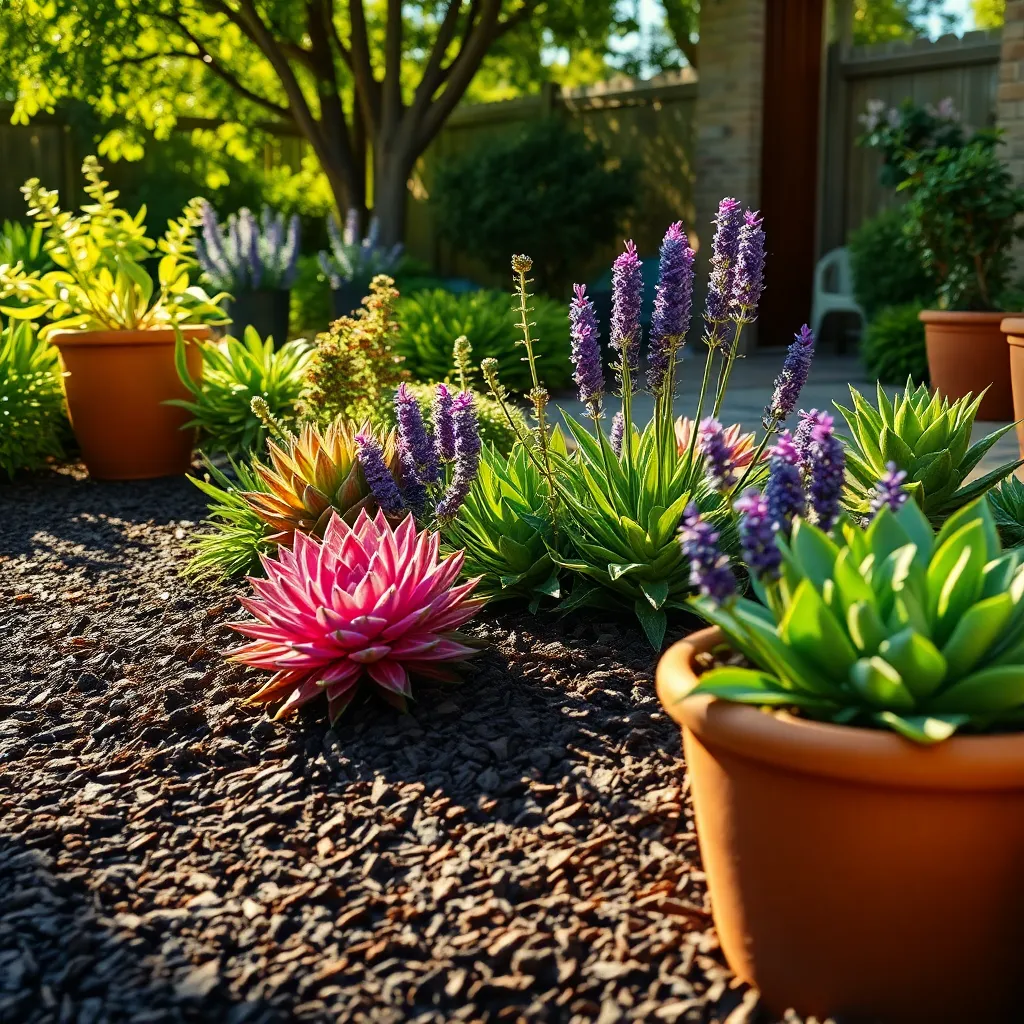
Mulching is a highly effective technique for retaining soil moisture in your patio garden. By covering the soil surface with a layer of organic material, you can significantly reduce the evaporation rate, keeping your plants hydrated longer.
Start by selecting the right type of mulch for your plants and environment. Organic options like shredded bark, straw, or wood chips are excellent choices for most gardens, providing both moisture retention and soil enrichment as they decompose.
Spread a layer of mulch about 2-3 inches thick around your plants, taking care not to pile it against the stems or trunks. This thickness is optimal for preventing water loss while also helping to suppress weeds and regulate soil temperature.
For a more advanced approach, consider using a combination of mulch types to suit specific plant needs. For instance, lightweight pine needles are ideal for acid-loving plants such as azaleas and blueberries, while heavier mulches like bark can provide better protection for larger shrubs and trees.
Group Plants by Water Needs
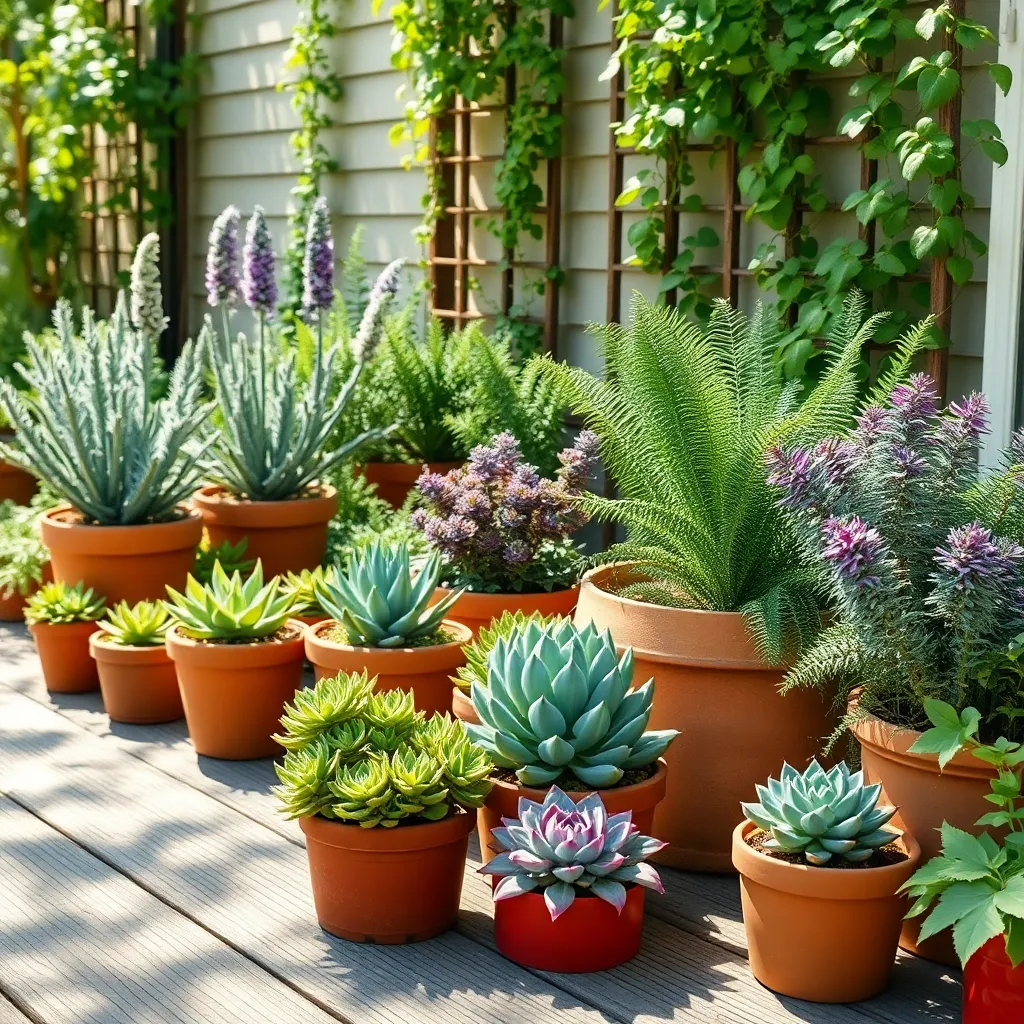
Grouping plants by their water needs is a smart strategy to create a thriving low-water patio garden. By placing plants with similar moisture requirements together, you ensure that each receives the optimal amount of water without over or under-hydrating them.
Start by selecting drought-tolerant plants such as succulents, lavender, and rosemary, which require minimal watering. These plants typically thrive in well-draining soil, so consider using a sandy or gritty mix to prevent waterlogging.
For those who prefer a mix of plant types, consider organizing your patio garden into zones. Create a separate area for plants that need a bit more moisture, like ferns or astilbes, and ensure they have access to partial shade to reduce evaporation.
Advanced gardeners might use drip irrigation systems to manage water delivery precisely. These systems can be adjusted to provide more water to thirstier plants while conserving water for others, making them an excellent investment for a sustainable garden.
Additionally, consider using self-watering containers to further control water usage. These containers allow plants to absorb water as needed from a reservoir, ensuring consistent moisture levels without the risk of overwatering.
Utilize Self-Watering Containers
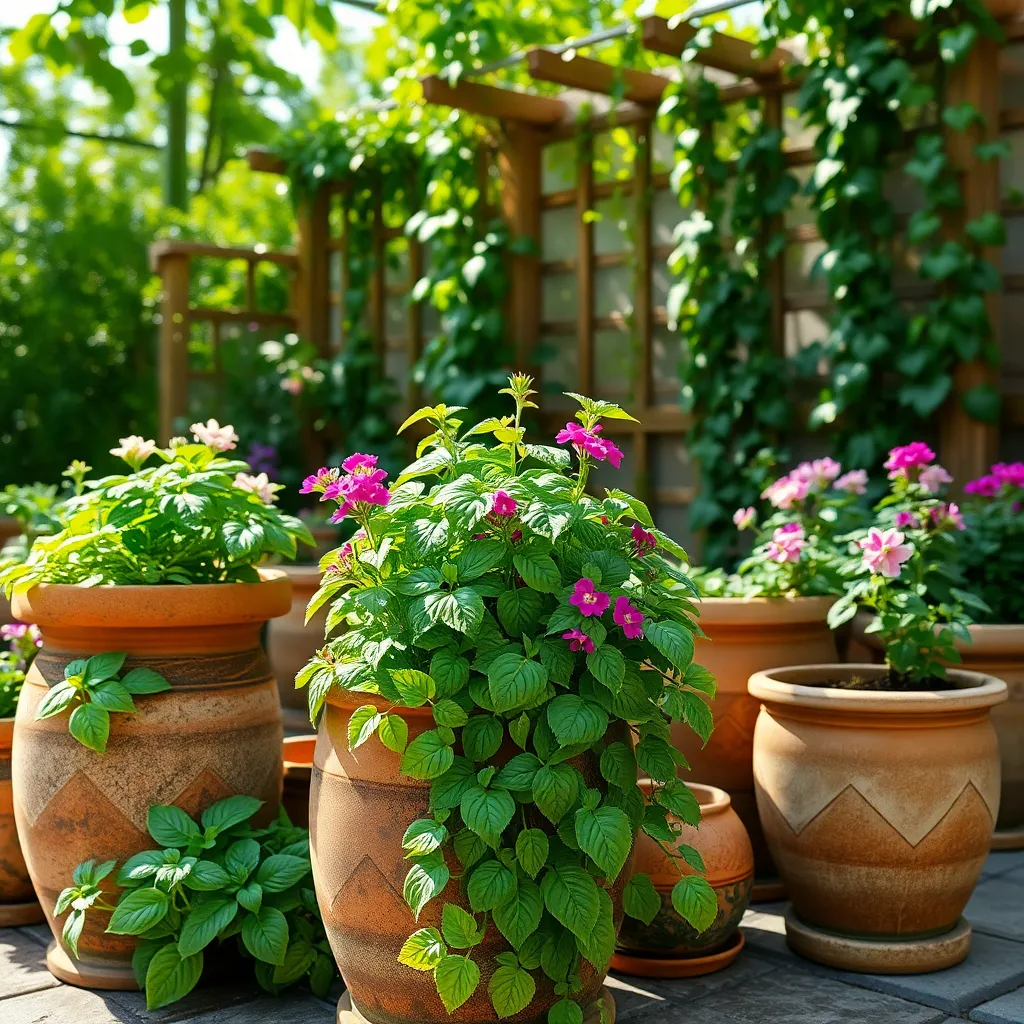
Self-watering containers are a fantastic way to ensure your patio plants receive consistent moisture without daily watering. These containers use a reservoir system that allows plants to draw water as needed, making them perfect for low-water gardening.
To get started, choose containers with a built-in water reservoir and a wicking system that delivers moisture to the soil. Ensure the reservoir is filled every one to two weeks depending on the weather and plant type, allowing you to save water and time.
Avoid overfilling the reservoir to prevent root rot; instead, monitor the water levels and refill as necessary. Use a high-quality potting mix that retains moisture well, such as one with added vermiculite or coco coir, to complement the self-watering system.
For beginners, start with hardy plants like herbs—basil, mint, or rosemary thrive in self-watering containers. Advanced gardeners might experiment with more demanding plants, such as tomatoes or peppers, adjusting the reservoir frequency to match their higher water needs.
Install Drip Irrigation Systems
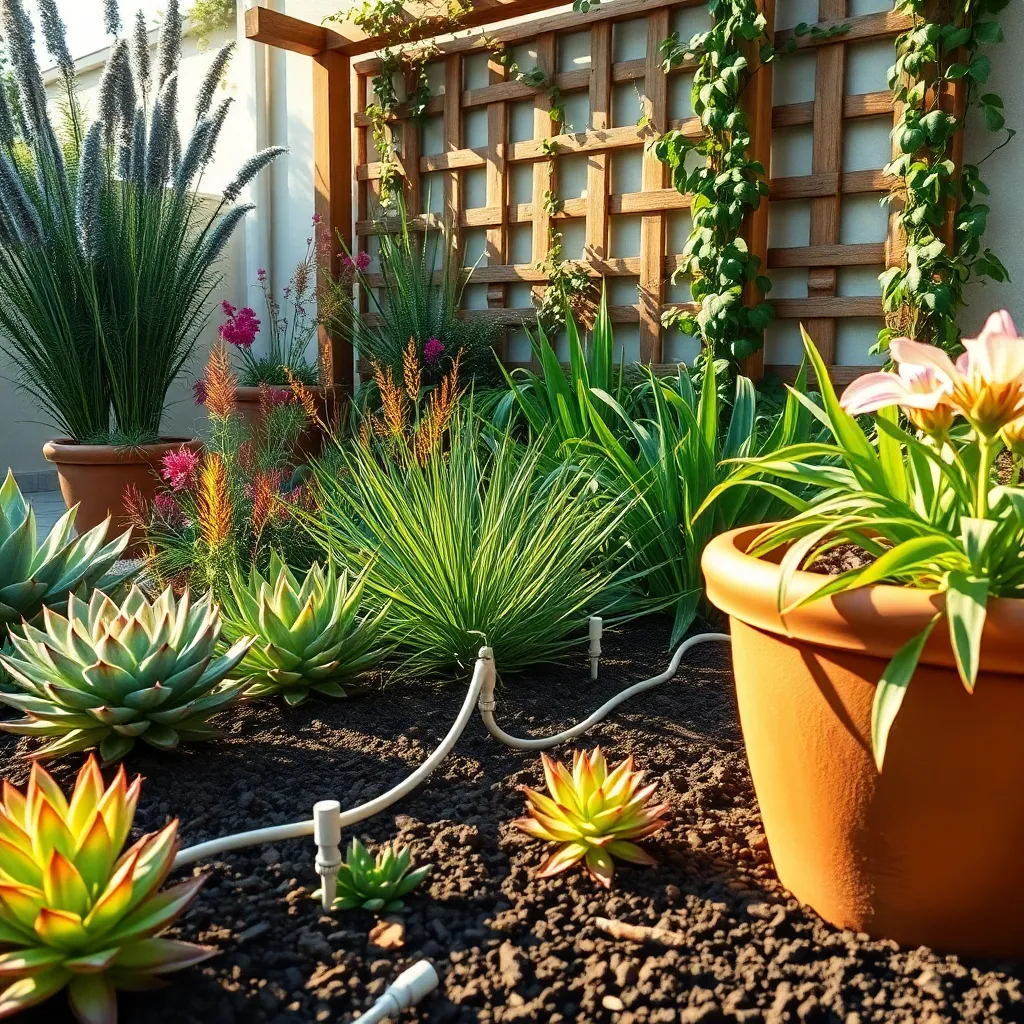
Drip irrigation systems are an excellent way to ensure your patio garden thrives while conserving water. By delivering water directly to the base of your plants, these systems minimize evaporation and runoff, optimizing water usage.
Begin by assessing the layout of your patio garden to determine the best placement for your drip lines. Strategically position emitters to target the root zones of your plants, ensuring that each one receives adequate moisture.
For beginners, kits are available that include everything you need to get started, including tubing, emitters, and connectors. These kits are typically easy to install and come with instructions that guide you through the process step by step, making them a great introduction to drip irrigation.
Advanced gardeners might consider customizing their systems to include timers and pressure regulators. Timers automate the watering schedule, allowing you to water during cooler parts of the day, while pressure regulators ensure consistent flow, preventing over- or under-watering.
Regular maintenance is essential to keep your drip irrigation system functioning effectively. Check the emitters periodically for clogs and clean them as needed to maintain efficient water delivery to your plants.
Use Permeable Paving Materials
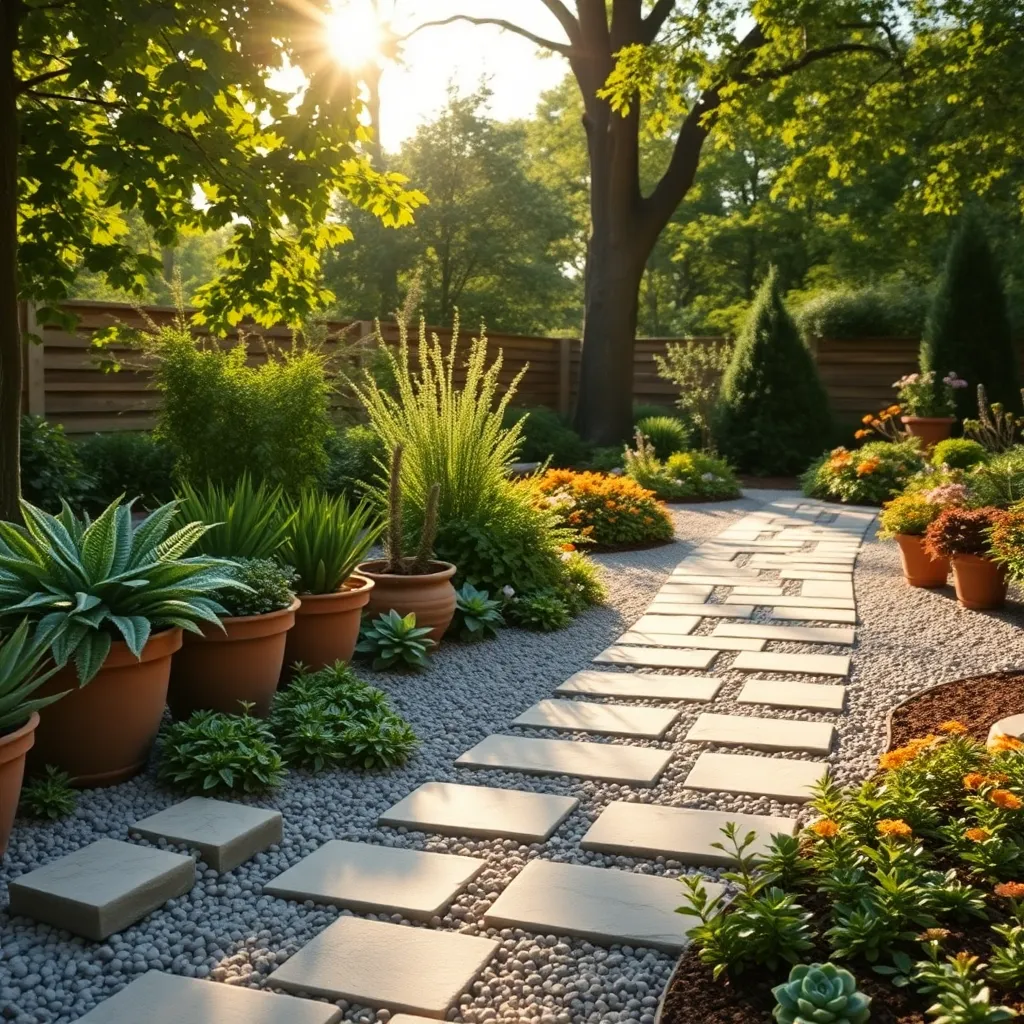
Choosing permeable paving materials for your patio garden can significantly reduce water runoff and help conserve water. These materials, such as gravel, permeable concrete, or brick, allow rainwater to seep through the surface, replenishing the groundwater supply.
For beginners, starting with gravel can be a cost-effective and simple solution. Ensure the gravel is laid on a slight slope to guide excess water away from plant roots, preventing waterlogging.
Experienced gardeners might consider using permeable pavers, which offer a more finished look while still allowing water to pass through. These pavers often come in interlocking designs that create small gaps for water infiltration, promoting healthy soil moisture levels.
To maximize the benefits of permeable paving, combine it with native plants that are well-suited to your climate and require less water. This combination not only enhances the aesthetic appeal of your patio garden but also supports local ecosystems.
Shade Patio with Tall Planters
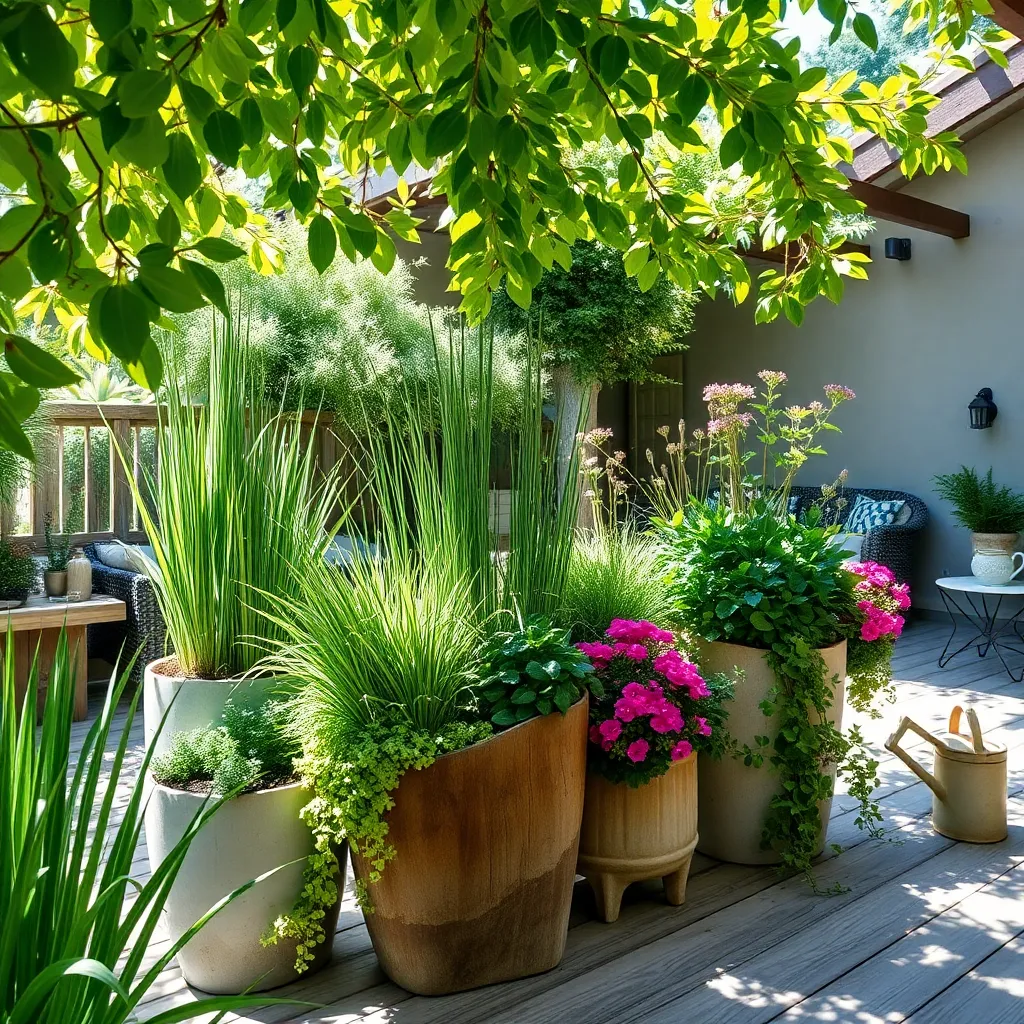
Creating a shaded patio with tall planters is an excellent way to introduce vertical interest while conserving water. Choose planters that have a good depth and are made of materials like ceramic or metal, which help in retaining moisture.
When selecting plants, consider species like bamboo or dwarf trees that thrive in partial shade and have low water needs. Ensure your planters have drainage holes and use a high-quality potting mix to promote healthy root growth.
For those seeking to add color, opt for shade-tolerant flowering plants such as impatiens or begonias. These plants require minimal watering once established, making them ideal for low-water gardens.
To enhance moisture retention, apply a layer of mulch on top of the soil in each planter. Mulching helps reduce evaporation and keeps the roots cool during warmer months.
Opt for Native Plant Varieties
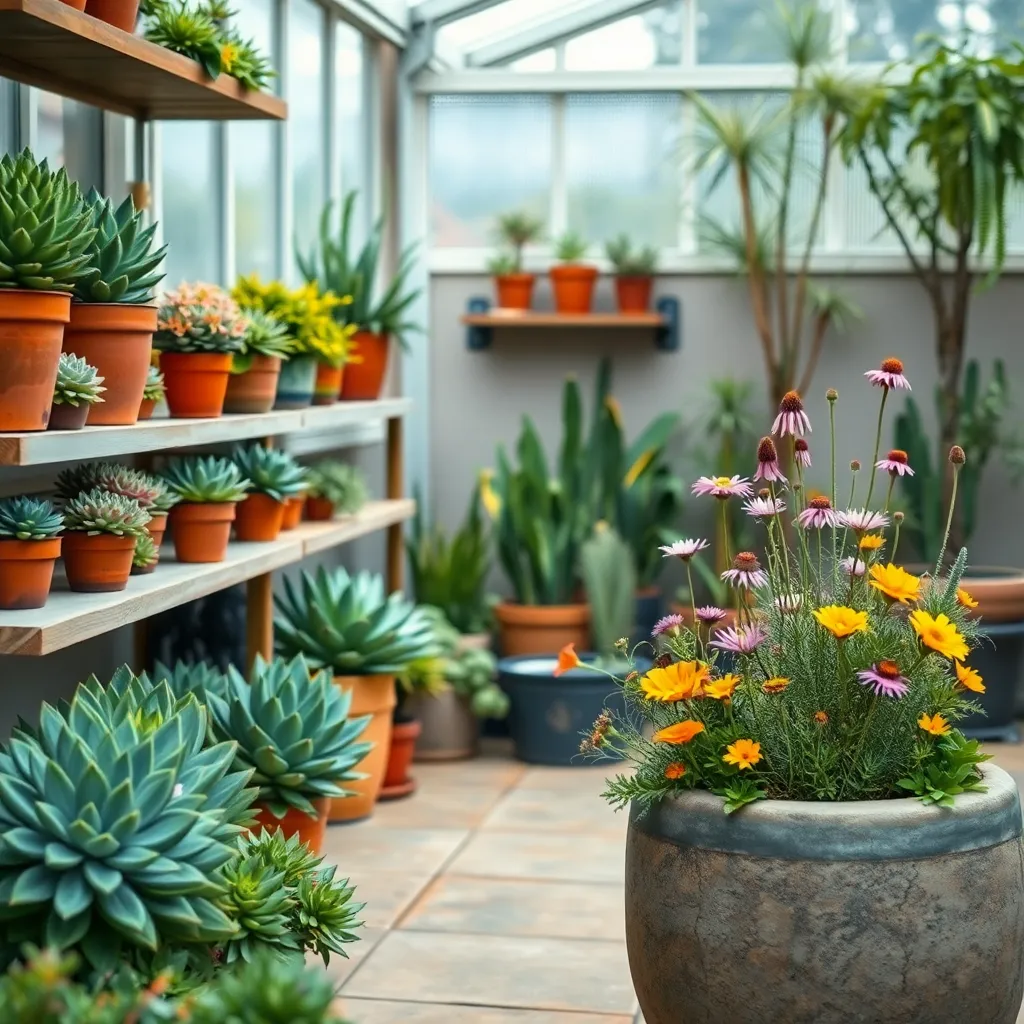
To create a thriving low-water patio garden, consider opting for native plant varieties that are naturally adapted to your local climate. These plants typically require less water and can withstand local pests and diseases, making them a low-maintenance choice for any gardener.
Start by researching plants native to your region, as they will likely thrive with minimal intervention. Consider species like coneflowers, lavender, or yucca, which are known for their drought-tolerance and resilience.
When planting native varieties, ensure the soil is well-draining to prevent root rot, which can occur with excessive moisture retention. Amending your soil with sand or perlite can improve drainage, especially if you’re using containers or planters on your patio.
For beginners, a simple guideline is to water deeply but infrequently, allowing the soil to dry out between waterings. This technique encourages deep root growth, enhancing the plant’s ability to access water during dry spells.
Experienced gardeners might experiment with grouping plants with similar water needs together to create a harmonious watering schedule. By strategically placing moisture-loving plants in shaded areas, you can further conserve water and ensure their success.
Harvest Rainwater for Irrigation
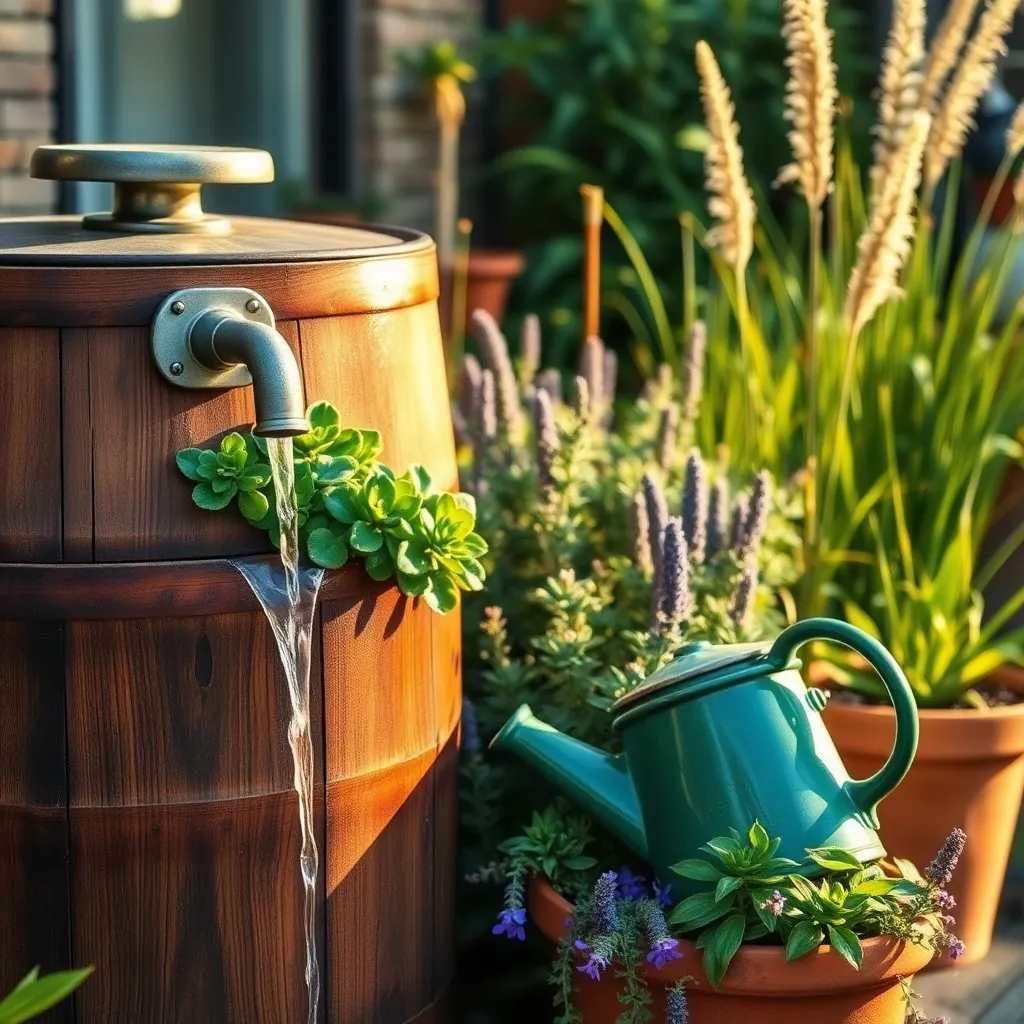
Harvesting rainwater is an excellent way to provide your patio garden with a sustainable water source. Begin by setting up a simple rain barrel system, which can be as basic as a large food-grade barrel positioned under a downspout.
To ensure the collected water is suitable for irrigation, install a screen or mesh to filter out debris and leaves. Incorporating a spigot at the base of the barrel allows for easy access to the water, letting you fill up watering cans or attach a hose.
Not only does rainwater capture reduce reliance on municipal water, but it also provides your plants with soft, chemical-free hydration. If you’re in a region with frequent rainfall, consider connecting multiple barrels in sequence to maximize your storage capacity.
For those with more space, a larger cistern could be a more advanced option to store significant amounts of water. Remember to place your rain barrel on a sturdy, elevated platform to facilitate water flow and make dispensing easier.
Limit Lawn Area with Hardscape
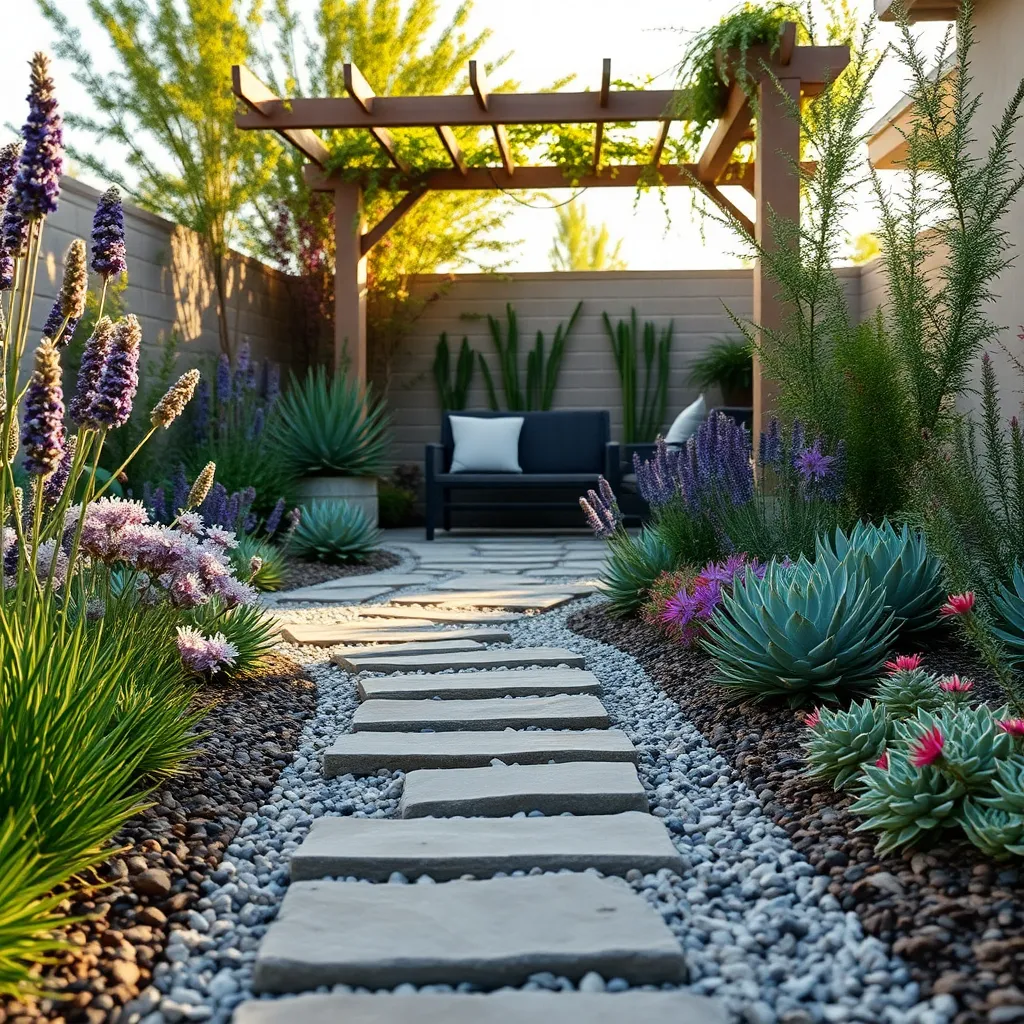
Incorporating hardscape elements into your garden design can significantly reduce the amount of lawn you need to maintain. Consider adding pathways, patios, or even decorative stones to create a more structured and water-efficient landscape.
Hardscape features not only cut down on water usage but also provide a stunning visual contrast to your greenery. Opt for permeable materials, like gravel or decomposed granite, which allow rainwater to seep into the ground, supporting nearby plants.
For an added touch, use hardscape areas to showcase drought-tolerant plants like succulents and ornamental grasses. These plants require minimal water and can thrive in the well-drained soil often found near hardscape installations.
Those looking to add a personal touch might integrate seating areas or decorative pots into their hardscape design. Choose large pots for container gardening, using a mix of well-draining soil and mulch to retain moisture efficiently.
Conclusion: Growing Success with These Plants
In exploring the ’10 Low-Water Patio Garden Ideas,’ we’ve delved into crucial relationship-building concepts such as adaptability, creativity, and resilience. Each garden idea—from succulent arrangements to vertical planters—mirrors a distinct relationship principle like embracing change, fostering growth together, and nurturing bonds with minimal resources. These concepts remind us that, like a garden, relationships thrive on care, innovation, and the ability to flourish despite constraints.
As your immediate next step, choose one garden idea that resonates with you and discuss with your partner how you might apply its underlying principle to enhance your relationship. Perhaps it’s about finding beauty in simplicity or learning to thrive during lean times.
Don’t forget to bookmark this article as a valuable resource. Saving it will allow you to revisit these insights whenever you need a fresh perspective or a motivating reminder.
Looking ahead, remember that cultivating a thriving relationship is an ongoing journey, much like tending to a garden. With commitment and creativity, your partnership can blossom beautifully, standing resilient through all seasons. Start nurturing your relationship garden today, and watch it flourish beyond your expectations.

